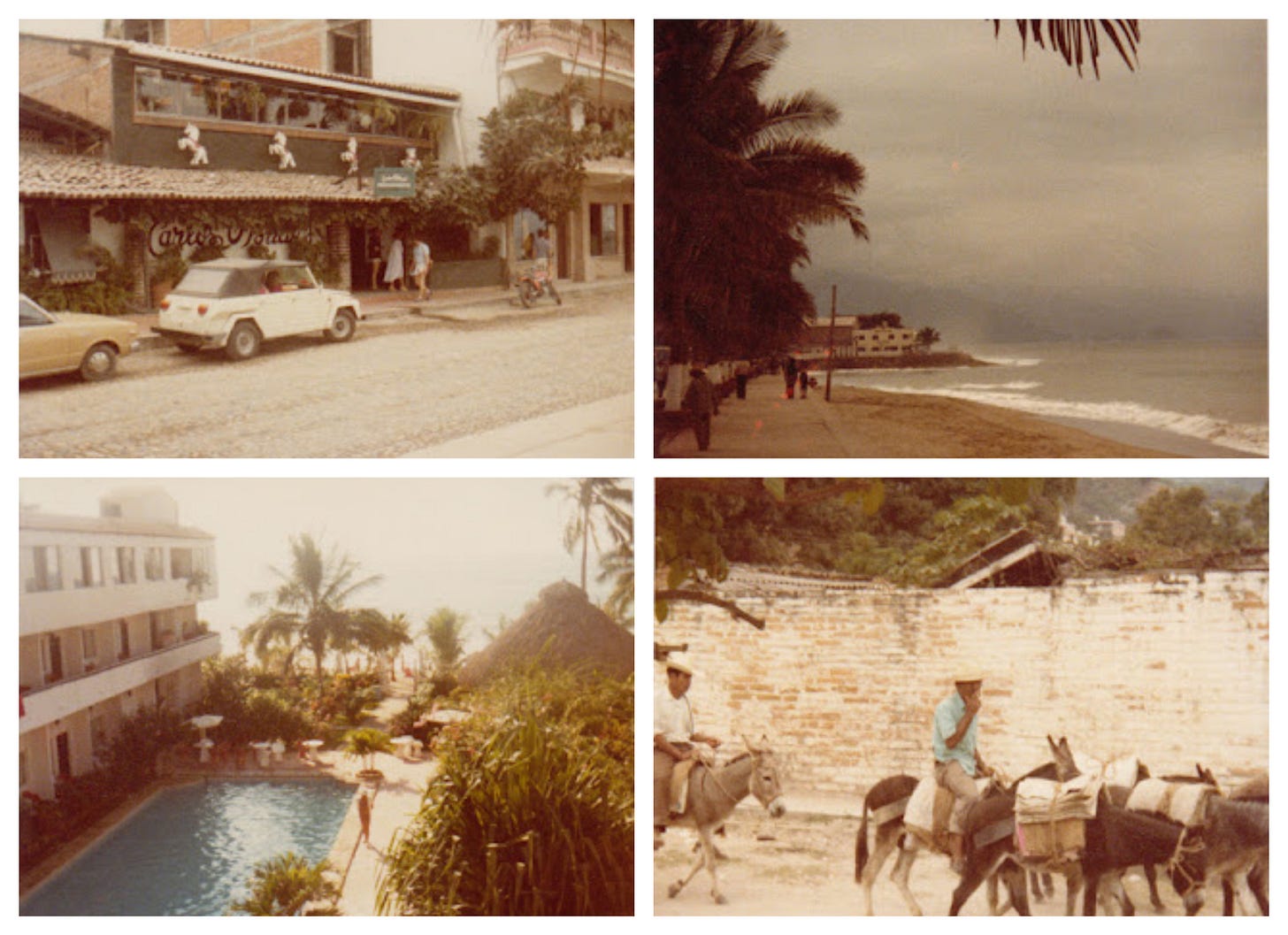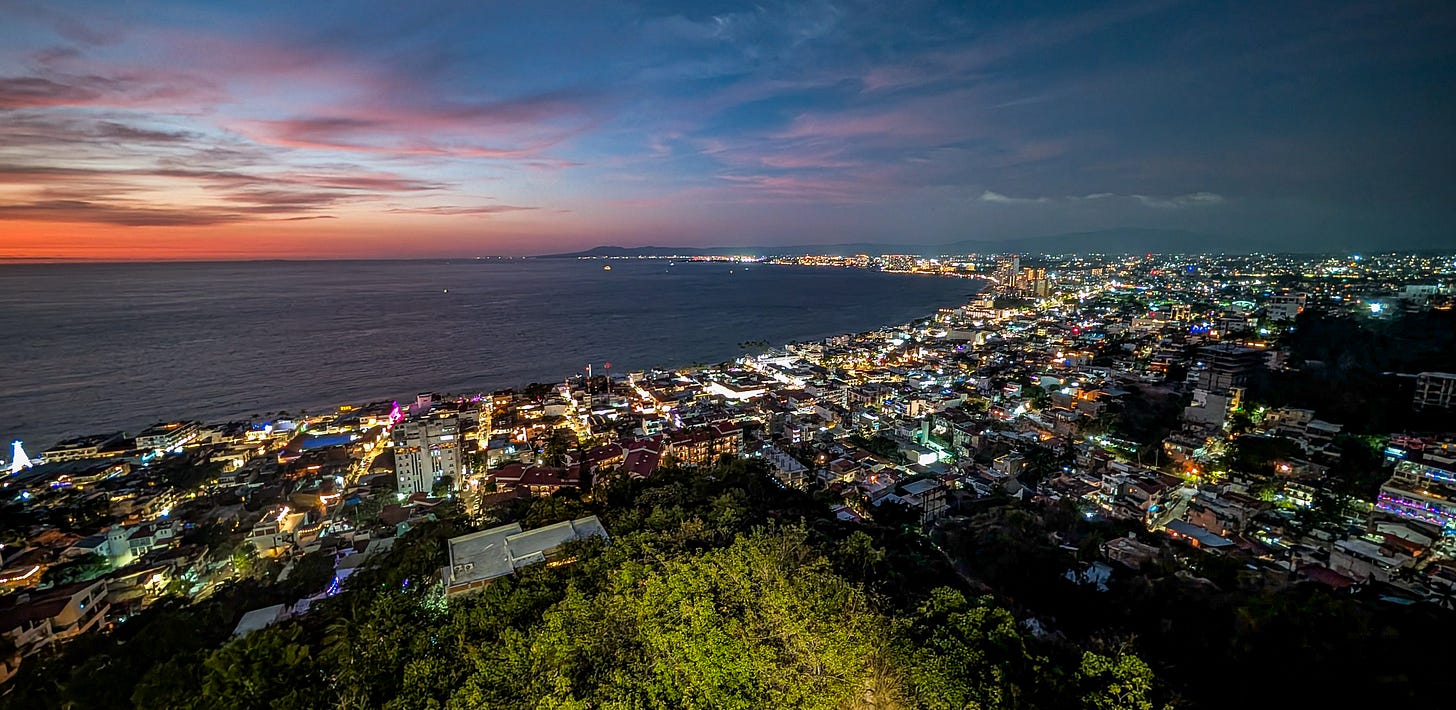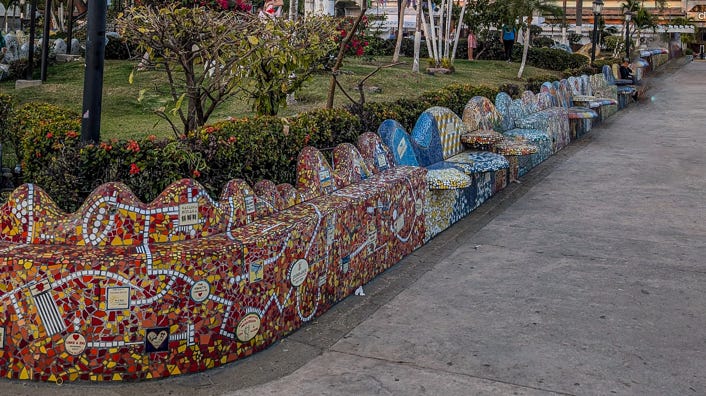Seven Surprising Things About Puerto Vallarta, Mexico
It has *lots* of dangerous animals, hidden beaches, and great public art, but also extreme wealth and high poverty. Oh, and (almost) no hurricanes.
Brent and I recently took a Princess cruise, and you can watch episodes of the old 1980s TV show The Love Boat in your cabin. The show featured weekly guest stars — mostly washed-up TV actors but also sometimes washed-up big-name movie stars from the previous era — playing characters who find love and excitement on board a cruise ship.
It was just as campy as it sounds, and as a kid, I loved every minute.
Anyway, the love-laden cruise ship in question often stopped at Puerto Vallarta, and while the show itself was mostly filmed on a soundstage in Los Angeles, they intercut scenes with stock footage of the actual Mexico.
And it is shocking how small and quaint Puerto Vallarta looked back then!

Brent and I are currently in Puerto Vallarta, and part of the reason for the massive changes that have happened here since the 1970s is the publicity that came from The Love Boat. The show helped turn this once-tiny fishing village into one of Mexico’s top tourist destinations.
(Puerto Vallarta’s first brush with international fame came back in the 60s when Richard Burton and Elizabeth Taylor — possibly the two most famous people in the world — came to town so Burton could film the movie The Night of the Iguana. But that’s a whole other story.)
Anyway, here are seven other surprising things about Puerto Vallarta!
1) A local slur has been reclaimed as a point of pride.
Puerto Vallarta has long been poor and working class — it really was a tiny fishing village. And wealthier Mexicans referred to the locals disparagingly as “pata salada” — or “salty foot” (technically “salty paw”).
But locals have since reclaimed the slur, now wearing it with pride. You’ll find plenty of businesses around town using the nickname, including Pata Salada Boat Rental and Pata Salada Seafood Grill.
Speaking of names, technically, “Puerto Vallarta” means “Port Vallarta” in Spanish — duh. These days, many English-speaking tourists and expats call the city “PV,” while Mexicans are far more likely to call it “Vallarta.”
2) The art is surprisingly interesting.
Puerto Vallarta is a famously tolerant place, so maybe it’s not surprising that it’s home to a lot of great public art.
There’s the street art:
And there’s a series of fantastic — and occasionally daring — sculptures along the Malecón, which is Puerto Vallarta’s lovely mile-long waterfront esplanade:
Finally, there’s Lázaro Cárdenas Park, which is an entire park made of dozens of benches that have been fitted with all kinds of different mosaic patterns.
Many benches were sponsored by local businesses, with a single artist overseeing the specific design.
No photo can capture how spectacular this all is, but here goes:
The city has plenty of public and private art galleries too. We loved Galleria Dante, but check out Puerto Vallarta Artwalk for all the city’s offerings.
(3) There’s lots of other wildlife — some of it kind of scary.
We’ve already talked about the thousand or so humpback whales that winter in the bay on which Puerto Vallarta sits, putting on an almost non-stop show, jumping and cavorting for the spectators on shore.
But Brent and I are living in a villa that borders a jungle just south of town. Check out what recently passed right by us while we were sleeping one night:








